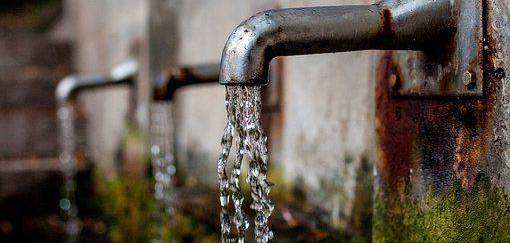
About 80 per cent of the water supplied to households in India’s capital, Delhi ends up as wastewater, some of which remains untreated, polluting the city’s waterways and threatening the health and wellbeing of its residents. This metropolitan area, with its population of approximately 30 million, currently has 35 operational sewage treatment plants.
In December last year, the Indian government announced its plans to treat over 95 per cent of Delhi’s wastewater by the end of 2022 - over four times the national average.
To support this initiative, the United Nations Environment Programme (UNEP) launched the first-ever study of its kind to examine how Delhi, India’s largest city, recycles its wastewater and how it can be done more efficiently.
It assessed the various technologies sewage treatment plants use for nutrient recovery and recycling for safe and sustainable re-use of wastewater in Delhi. These include activated sludge process (ASP), extended aeration (EA), moving bed biofilm reactor (MBBR), sequential batch reactor (SBR), or fluidized aerobic bed reactor (FAB) processes.
The UNEP study found that the MBBR system is the most suited to the situation in Delhi and should, where possible, be employed in new treatment plants.
MBBR is a modern system invented in Norway that uses a combination of biological rather than only chemical or mechanical processes to treat the water and remove pollutants. But this system is not without its challenges, say experts.
"The adoption of MBBR technology for large sewage treatment plants is challenging as maintenance costs are large,” said Sangeeta Bansal, a lead researcher on the project.
The study suggests that other systems, such as SBR, and ASP could also be used for larger sewage treatment plants.
In addition to mapping Delhi's current nutrient recovery, recycling and reuse practices against available treatment options, the study has developed an ecosystems health card to measure the water quality and assess the revival of selected water bodies in the city.
Some forms of pollution cause an increase in minerals and nutrients in the water, a process known as eutrophication, which leads to increased plant life, including algae, but a decrease in the diversity of fish and bird life. Raw sewage and food waste are also rich in nutrients, notably reactive nitrogen compounds such as nitrates and ammonium compounds, which are converted into nitrous oxide, a greenhouse gas 300 times more potent than carbon dioxide.
Lake Najafgarh in Delhi is one example of a polluted waterway. Since 2011, the lake area has increased by eight per cent due to pollution. It feeds into the Yamuna River, which flows through the city and is one of the main tributaries of the Ganges River.

Cattle travel through toxic foam in the polluted River Yamuna that flows through Delhi. Photo by Ashoke Kumar Ghosh
“Supporting water security by using treated wastewater for non-potable purposes like toilet flushing, car washing, construction, agriculture, and rejuvenating affected rivers and lakes, is vital for the city’s sustainable development,” said Riccardo Zennaro, a Programme Management Officer for wastewater at UNEP.
“It can also improve access to clean tap water,” he added. “Wastewater treatment supports the recycling and recovery of water and nutrients and is, therefore, critical for sustainable water and nutrient management, while preventing pollution. However, it needs significant improvement to meet Indian government environmental standards.”
A stakeholder engagement workshop is planned to inform local and national decision-makers and relevant authorities about the findings of the project and discuss the next steps in implementing the recommendations as well as possible follow-up actions.
Source :
- UNEP
Posted on 2022-08-10 10:10








Comments